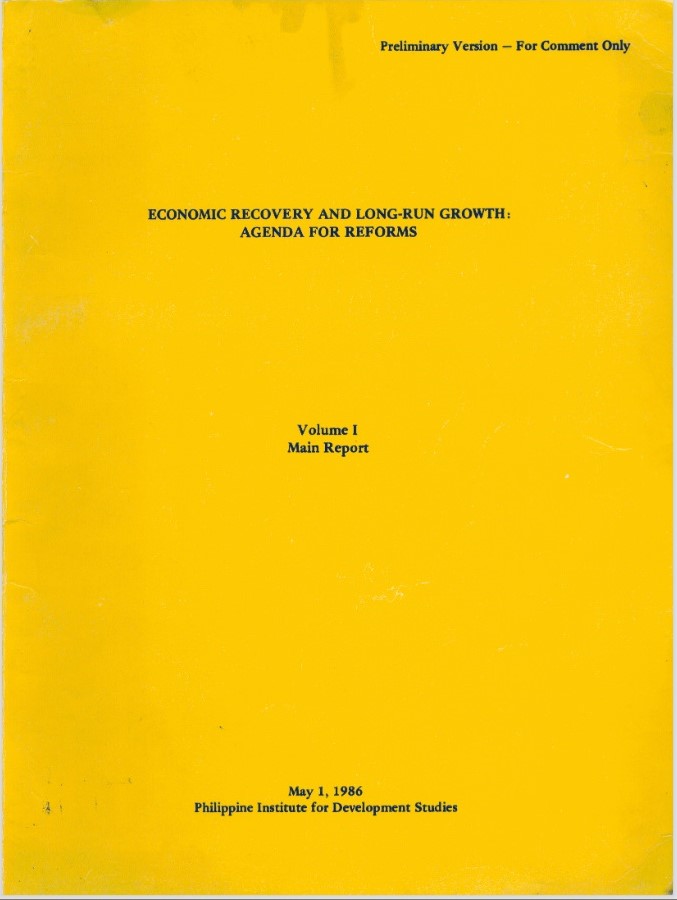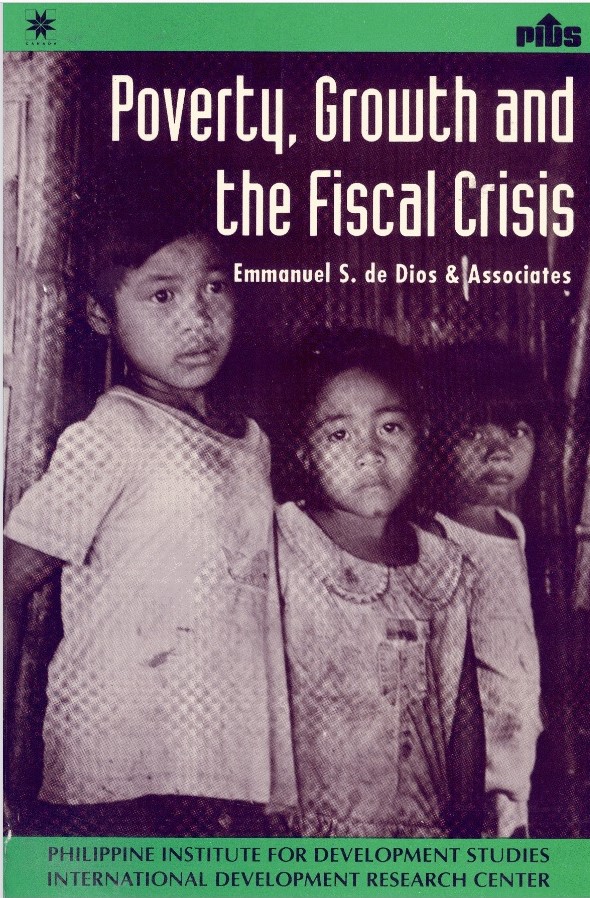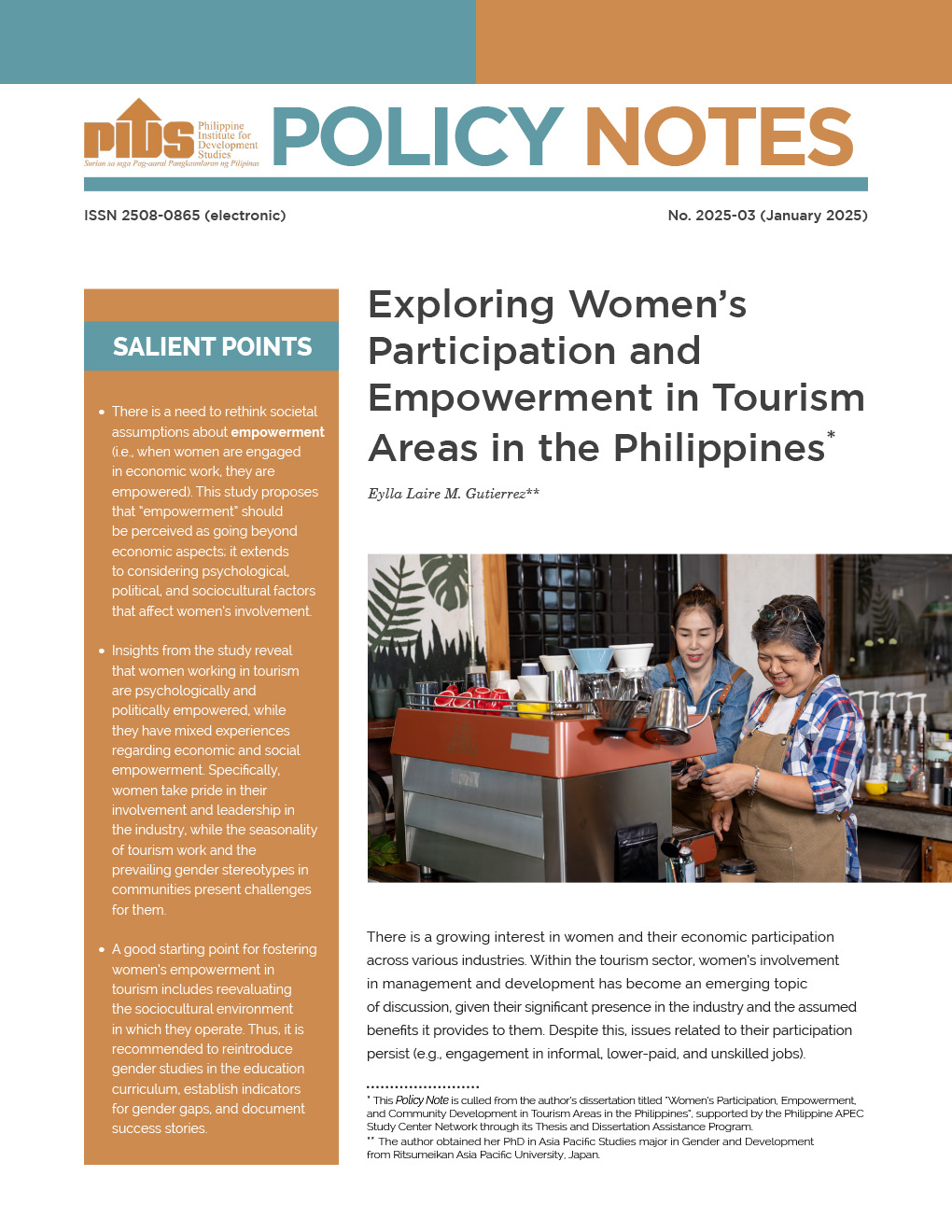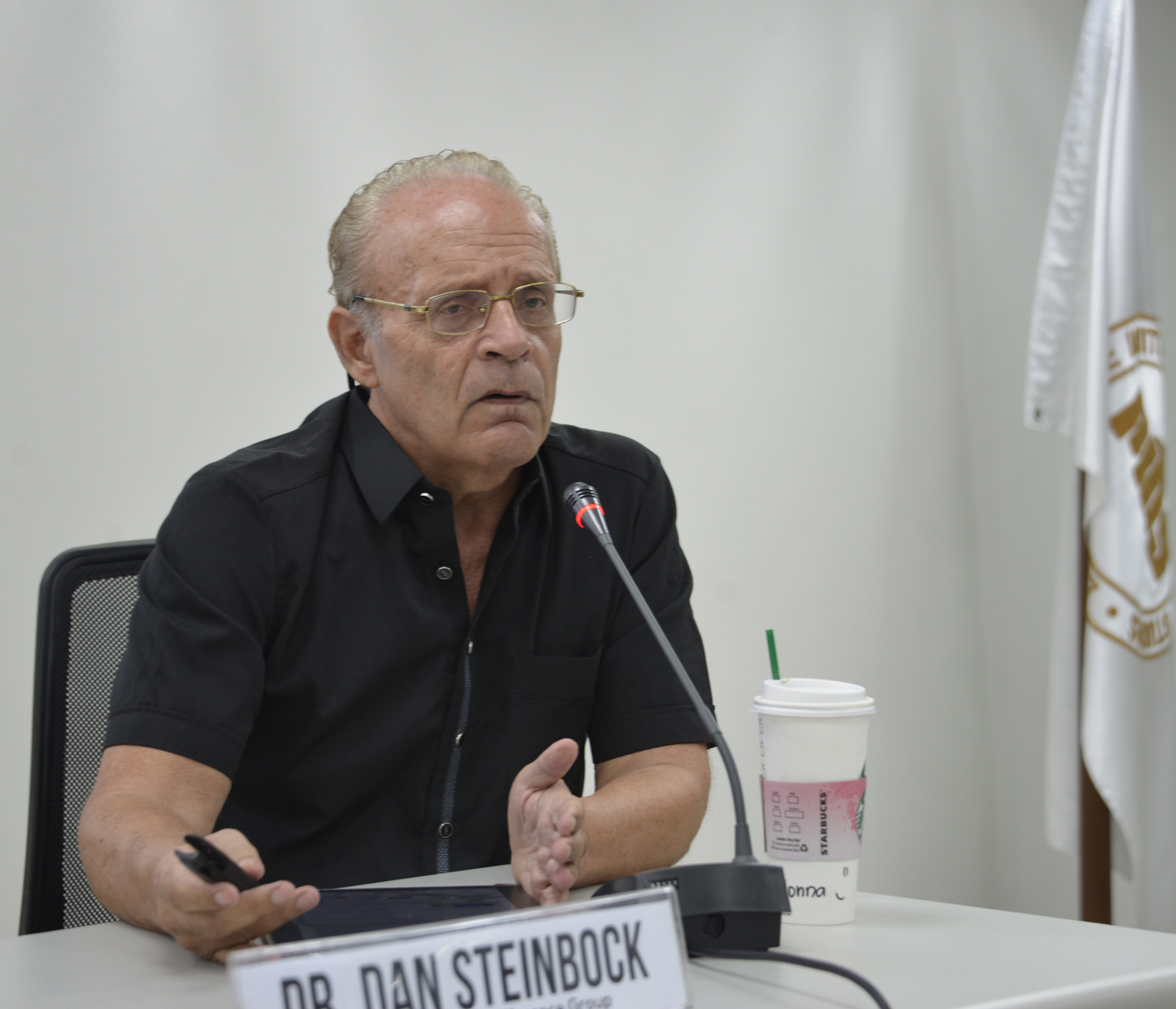The Philippines can expect a lot of positive growth for the next 24 months. State think tank Philippine Institute for Development Studies (PIDS) OIC-Vice President Dr. Adoracion Navarro and Philippine Stock Exchange (PSE) President and Chief Executive Officer Hans Sicat came to this optimistic conclusion at the PIDS Philippine Business and Economic Outlook seminar held on May 19 in Makati City. Both agreed, however, that the risk of overlooking important opportunities remain if both the government and the private sector fail to address the challenges and issues hindering a truly inclusive growth.
Sicat said the PSE is anticipating a "robust" 24 months ahead, in terms of infrastructure build, consumer spending, and in particular, the financial sector.
In the same positive vein, Navarro posited a 6.8-percent growth for the national economy for 2015.
Performance
Sicat painted an image of accomplishments and ripe growth opportunities ahead for the Philippine financial sector.
"We’re trading around 11 billion pesos on any given day. It means that the market is growing faster."
Upon measuring the behavior of publicly listed firms and their ability to generate revenues and net income for the past three years, figures reveal that publicly listed firms have grown faster than the economy since 2011. This means, assuming the belief that stock markets significantly represent the growth of the economy, the financial market has outperformed the growth numbers of the real economy.
Sicat considered the level of participation of the market plays relative to the size of the economy as an indicator differentiating developed and developing markets. All the numbers considered, the country is considerably no longer in the underdeveloped market bracket.
Out of all the sectors, mining and oil posted dismal numbers. The government’s choice to focus solely on the green side of things, overlooking the business and employment generation of the sector, contributed to its laggard growth, he said. Sicat claimed that if the country can pull itself together, take advantage of the low oil prices, and help optimize mining operations, the sector could contribute one percent to the country`s GDP.
In other matters, Sicat soothed fears about bubbles in the burgeoning property sector. The Banko Sentral ng Pilipinas had put macro policy measures in place, and none of the banking institutions have so far hit any of the warning indicators.
Navarro attested to the same views about the country’s recent performance. "The Philippines is generally in sync with the vibrant expansion of our neighbors," she noted.
On the demand side, the primary growth drivers were household consumption and net exports. Net exports included miscellaneous services, which constituted 79 percent of total export services. On the supply side, the services sector contributed the most. Meanwhile, manufacturing contributed the most to overall growth, a trend that has consistently progressed following the revival of the sector in 2013.
The country's total revenues have stayed high, buoyed by expanding of economic activities and broadening of tax base.
Opportunities
PSE is looking forward to major improvements in the financial sector's penetration rate. In the Philippines, only 31 percent of the population have some kind of banking account. The huge untapped potential demand for banking and corporate expansion adds to Sicat’s optimistic view for the sector's growth.
Currently, actors in the financial sector are trying to enable the environment for a more diverse, easier, and more lucrative trading and securities exchange. The PSE is encouraging more mergers and the consolidation of bank payment systems. It is also reaching out to the top universities to promote market education, on top of running online courses. The launching of new ASEAN indices, PSE hopes, will help improve trading standards.
In addition, Sicat outlined the opportunities for other sectors. He predicted that manufacturing firms and the energy sector will do well. The services and tourism sectors will likewise prosper. The gaming and casino industry`s integrated resort and malls are massive operation. "One thing they've done that the government hasn`t is spend 3 billion US dollars building infrastructure. This is actually one of the bright spots and has been a great employment-generating activity," said Sicat.
Navarro reminded everyone that apart from generating revenue, the country must mobilize long-term capital and optimize investments in infrastructure, research and development, and innovation. The government and the private sector should work together to narrow down the savings-investment gap, she said.
The public-private partnership (PPP) projects have proven dynamic and successful. But Navarro stressed that PPPs have to be replicated in other economic activities. There must also be `a dynamic pipeline for the public sector and a dynamic potential investment portfolio for banks and infrastructure "for project development activities to evolve. There should be massive and continuous market research and project development activities in infrastructure and agribusiness," she added.
Challenges
The road blocks to achieving these potentials, however, are plenty.
"We used to worry about political change, but it’s low on our list now as we’re more worried about cybersecurity," mentioned Sicat, demonstrating that challenges evolve with the times. But he also pointed out old issues like fickle tax policies that undermine the country’s credibility and reputation of good governance.
Navarro criticized the slow development of national infrastructure. She also stressed the impact of lacking quality and certification measures in manufacturing, and underscored the importance of prioritizing investor protection.
The issue of rising underemployment was also discussed at the seminar's open forum. PIDS President Gilberto Llanto rued the fact that the public sector often gave the private sector a pass in playing their role in creating quality jobs. Llanto warned that underemployment may not be a question of capital, but a question of talent.
"I want to relate underemployment to the inability of educated Filipinos to do product development, to conceptualize business activities." Llanto warned, "If we don’t strive to quickly adjust to market changes, then we will have to stare at underemployment for a long time."
All of these challenges and issues will affect not only the future performance of the Philippine economy, but how it will size up in the ASEAN economic integration. In terms of competitiveness, the country is far from generating the enabling infrastructure to be at least a major player in the ASEAN. Furthermore, the policymaking environment and the implementing agencies are inconsistent, thus disabling an otherwise healthy business environment.
Conclusion
"2015, it’s looking good. Beyond 2015, it's looking good. That's the good news," concluded Llanto. But to realize the growth potential and make it all the more inclusive, both the government and private sector have to work together.
The country must invest in its human capital. At the same time, it must strengthen its institutions, make its policies more coherent and cohesive, and optimize its social capital to enable a good business environment.
Coordination and cooperation between the government and the private sector, and between individuals and firms, are necessary to empower a thriving business environment. In an era of disruption, the Philippines must figure out how everyone can collaborate to achieve inclusive growth.
Sicat said the PSE is anticipating a "robust" 24 months ahead, in terms of infrastructure build, consumer spending, and in particular, the financial sector.
In the same positive vein, Navarro posited a 6.8-percent growth for the national economy for 2015.
Performance
Sicat painted an image of accomplishments and ripe growth opportunities ahead for the Philippine financial sector.
"We’re trading around 11 billion pesos on any given day. It means that the market is growing faster."
Upon measuring the behavior of publicly listed firms and their ability to generate revenues and net income for the past three years, figures reveal that publicly listed firms have grown faster than the economy since 2011. This means, assuming the belief that stock markets significantly represent the growth of the economy, the financial market has outperformed the growth numbers of the real economy.
Sicat considered the level of participation of the market plays relative to the size of the economy as an indicator differentiating developed and developing markets. All the numbers considered, the country is considerably no longer in the underdeveloped market bracket.
Out of all the sectors, mining and oil posted dismal numbers. The government’s choice to focus solely on the green side of things, overlooking the business and employment generation of the sector, contributed to its laggard growth, he said. Sicat claimed that if the country can pull itself together, take advantage of the low oil prices, and help optimize mining operations, the sector could contribute one percent to the country`s GDP.
In other matters, Sicat soothed fears about bubbles in the burgeoning property sector. The Banko Sentral ng Pilipinas had put macro policy measures in place, and none of the banking institutions have so far hit any of the warning indicators.
Navarro attested to the same views about the country’s recent performance. "The Philippines is generally in sync with the vibrant expansion of our neighbors," she noted.
On the demand side, the primary growth drivers were household consumption and net exports. Net exports included miscellaneous services, which constituted 79 percent of total export services. On the supply side, the services sector contributed the most. Meanwhile, manufacturing contributed the most to overall growth, a trend that has consistently progressed following the revival of the sector in 2013.
The country's total revenues have stayed high, buoyed by expanding of economic activities and broadening of tax base.
Opportunities
PSE is looking forward to major improvements in the financial sector's penetration rate. In the Philippines, only 31 percent of the population have some kind of banking account. The huge untapped potential demand for banking and corporate expansion adds to Sicat’s optimistic view for the sector's growth.
Currently, actors in the financial sector are trying to enable the environment for a more diverse, easier, and more lucrative trading and securities exchange. The PSE is encouraging more mergers and the consolidation of bank payment systems. It is also reaching out to the top universities to promote market education, on top of running online courses. The launching of new ASEAN indices, PSE hopes, will help improve trading standards.
In addition, Sicat outlined the opportunities for other sectors. He predicted that manufacturing firms and the energy sector will do well. The services and tourism sectors will likewise prosper. The gaming and casino industry`s integrated resort and malls are massive operation. "One thing they've done that the government hasn`t is spend 3 billion US dollars building infrastructure. This is actually one of the bright spots and has been a great employment-generating activity," said Sicat.
Navarro reminded everyone that apart from generating revenue, the country must mobilize long-term capital and optimize investments in infrastructure, research and development, and innovation. The government and the private sector should work together to narrow down the savings-investment gap, she said.
The public-private partnership (PPP) projects have proven dynamic and successful. But Navarro stressed that PPPs have to be replicated in other economic activities. There must also be `a dynamic pipeline for the public sector and a dynamic potential investment portfolio for banks and infrastructure "for project development activities to evolve. There should be massive and continuous market research and project development activities in infrastructure and agribusiness," she added.
Challenges
The road blocks to achieving these potentials, however, are plenty.
"We used to worry about political change, but it’s low on our list now as we’re more worried about cybersecurity," mentioned Sicat, demonstrating that challenges evolve with the times. But he also pointed out old issues like fickle tax policies that undermine the country’s credibility and reputation of good governance.
Navarro criticized the slow development of national infrastructure. She also stressed the impact of lacking quality and certification measures in manufacturing, and underscored the importance of prioritizing investor protection.
The issue of rising underemployment was also discussed at the seminar's open forum. PIDS President Gilberto Llanto rued the fact that the public sector often gave the private sector a pass in playing their role in creating quality jobs. Llanto warned that underemployment may not be a question of capital, but a question of talent.
"I want to relate underemployment to the inability of educated Filipinos to do product development, to conceptualize business activities." Llanto warned, "If we don’t strive to quickly adjust to market changes, then we will have to stare at underemployment for a long time."
All of these challenges and issues will affect not only the future performance of the Philippine economy, but how it will size up in the ASEAN economic integration. In terms of competitiveness, the country is far from generating the enabling infrastructure to be at least a major player in the ASEAN. Furthermore, the policymaking environment and the implementing agencies are inconsistent, thus disabling an otherwise healthy business environment.
Conclusion
"2015, it’s looking good. Beyond 2015, it's looking good. That's the good news," concluded Llanto. But to realize the growth potential and make it all the more inclusive, both the government and private sector have to work together.
The country must invest in its human capital. At the same time, it must strengthen its institutions, make its policies more coherent and cohesive, and optimize its social capital to enable a good business environment.
Coordination and cooperation between the government and the private sector, and between individuals and firms, are necessary to empower a thriving business environment. In an era of disruption, the Philippines must figure out how everyone can collaborate to achieve inclusive growth.












